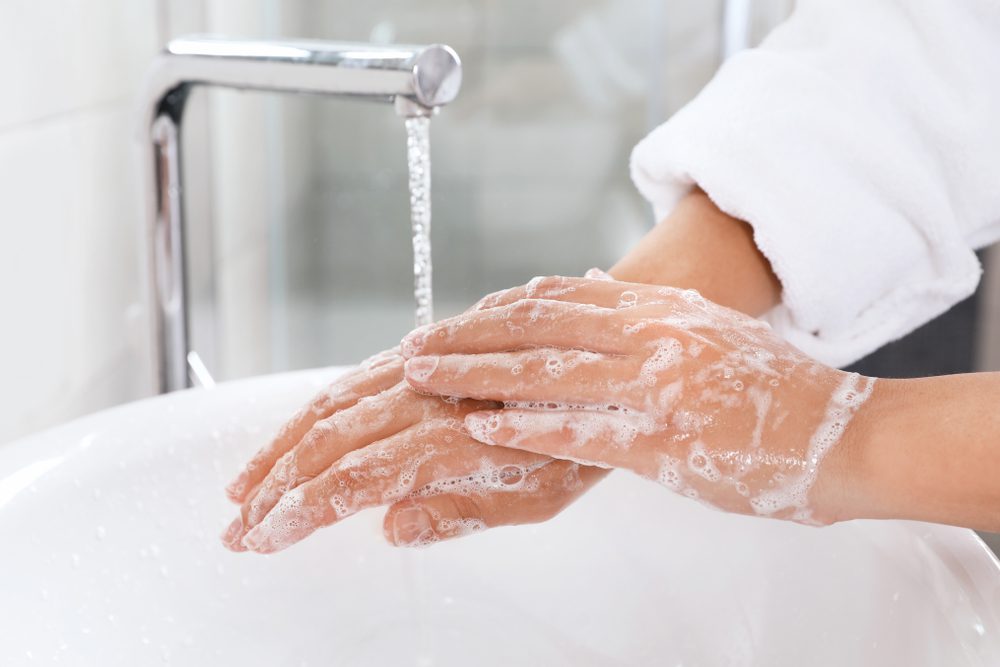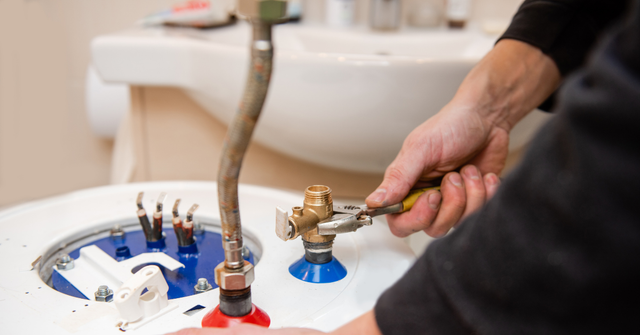Just about every person will have their private rationale on the subject of 10 Reasons for Low Water Pressure in Your House.

Low water stress in your house can be an irritating issue, impacting whatever from bathing to washing meals. If you're experiencing weak water flow, there are a number of possible reasons and options to check out. In this overview, we'll talk about usual reasons for low water stress and practical actions to attend to the problem properly.
Intro to Low Water Pressure
Low tide pressure occurs when the circulation of water from your taps, showers, and various other components is weak than normal. This can make day-to-day tasks more challenging and less reliable. Comprehending the causes of low tide stress is vital to finding the right solution.
Usual Causes of Low Tide Stress
Pipeline Obstructions
Gradually, pipelines can become blocked with mineral deposits, debris, or particles, restricting the flow of water. This is a common issue in older homes with galvanized steel pipelines.
Corrosion
Corrosion within pipelines can cause leaks and reduced water stress. Corrosion build-up can tighten water circulation, particularly in aging plumbing systems.
Faulty Stress Regulators
Stress regulatory authorities are in charge of preserving consistent water pressure in your house. If they malfunction, it can cause low water stress or uneven circulation throughout your home.
Local Supply Of Water Issues
Occasionally, the trouble exists outside your home. Community water system problems, such as main line leaks or maintenance work, can momentarily minimize water stress in your area.
Exactly How to Diagnose Low Water Pressure
Examining Taps and Fixtures
Beginning by evaluating the water pressure at various taps and components throughout your home. If the concern is separated to specific locations, it may suggest local problems.
Checking Pipelines
Check noticeable pipelines for signs of leakages, rust, or obstructions. Pay attention to any kind of unusual noises, such as banging or rattling pipelines, which can show concerns within the plumbing system.
Consulting with a Plumber
If you're incapable to pinpoint the source of low tide pressure, take into consideration employing a professional plumber to perform an extensive evaluation. They can recognize underlying problems and suggest appropriate services.
Do It Yourself Solutions to Take Care Of Low Tide Pressure
Cleaning Aerators and Showerheads
Natural resources can accumulate in aerators and showerheads, decreasing water circulation. Get rid of and clean these parts on a regular basis to boost water pressure.
Flushing Water Heater
Sediment accumulation in the water heater can limit circulation and decrease performance. Flushing the storage tank occasionally aids get rid of sediment and maintain optimal performance.
Checking Stress Regulatory Authority
Make sure that the stress regulatory authority is operating appropriately. Readjusting or replacing the regulator can assist restore appropriate water stress throughout your home.
Cleaning Clogs in Pipeline
For minor obstructions, try utilizing a plumbing snake or chemical drainpipe cleaner to clear obstructions in pipes. Beware when utilizing chemicals and comply with security guidelines.
When to Call a Professional Plumber
If do it yourself initiatives fall short to fix the concern or if you suspect significant plumbing troubles, it's ideal to seek aid from a qualified plumber. They have the competence and tools to resolve complicated concerns safely and successfully.
Preventive Measures to Maintain Water Pressure
Normal Upkeep
Arrange regular upkeep for your plumbing system to avoid problems such as corrosion, leaks, and clogs. Attending to small troubles early can aid avoid even more considerable repair services in the future.
Installing a Stress Booster
Consider setting up a stress booster pump to boost water pressure in locations with consistently reduced circulation. This can be specifically useful for multi-story homes or residential properties with high-demand components.
Tracking Water Use
Bear in mind water use habits and stay clear of ill-using the plumbing system. Straightforward changes, such as astonishing showers and washing loads, can assist preserve sufficient water stress.
Final thought
Taking care of low tide pressure can be discouraging, yet identifying the underlying reasons and implementing proper remedies can bring back ideal flow throughout your home. Whether it's cleansing aerators, examining pipes, or speaking with a plumber, taking proactive steps can guarantee a consistent supply of water for your everyday needs.
FOUR WAYS TO FIX LOW WATER PRESSURE NOW
Turning on a shower or faucet only to find the water comes out in a sad, slow drizzle is never a good feeling. How exactly are you supposed to wash a pan or take a quick shower when it takes 10 minutes just to rinse off a little soap? The good news is that when your water pressure is bad, there's always a cause: typically one that can be easily fixed. Here are some of the most common causes of low pressure and what you can do to fix the issue:
DEBRIS AND MINERAL DEPOSIT BUILDUPS
If you notice low water pressure from just one or two of the fixtures in your house, the problem likely has to do with debris buildup. Water is full of minerals and other debris, all of which can accumulate in your pipes and on your fixtures. This can cause a blockage that affects how much water flows through. To fix this, try filling a small plastic bag with white vinegar, and use a rubber band to hang it around your showerhead or faucet. Let the head of the fixture soak for a few hours, and the vinegar should loosen the deposits.
WATER LEAKS
Leaks are another common cause of low water pressure. If water is flowing out of your plumbing through a hole or crack before it can reach your fixture, the pressure coming out of the faucet or showerhead will be lower. A plumbing professional is your best bet for finding and repairing a leak in your water supply pipes.
Leaks are another common cause of low water pressure. If water is flowing out of your plumbing through a hole or crack before it can reach your fixture, the pressure coming out of the faucet or showerhead will be lower. A plumbing professional is your best bet for finding and repairing a leak in your water supply pipes.
FOUR WAYS TO FIX LOW WATER PRESSURE NOW
Turning on a shower or faucet only to find the water comes out in a sad, slow drizzle is never a good feeling. How exactly are you supposed to wash a pan or take a quick shower when it takes 10 minutes just to rinse off a little soap? The good news is that when your water pressure is bad, there's always a cause: typically one that can be easily fixed. Here are some of the most common causes of low pressure and what you can do to fix the issue:
DEBRIS AND MINERAL DEPOSIT BUILDUPS
If you notice low water pressure from just one or two of the fixtures in your house, the problem likely has to do with debris buildup. Water is full of minerals and other debris, all of which can accumulate in your pipes and on your fixtures. This can cause a blockage that affects how much water flows through. To fix this, try filling a small plastic bag with white vinegar, and use a rubber band to hang it around your showerhead or faucet. Let the head of the fixture soak for a few hours, and the vinegar should loosen the deposits.
WATER LEAKS
Leaks are another common cause of low water pressure. If water is flowing out of your plumbing through a hole or crack before it can reach your fixture, the pressure coming out of the faucet or showerhead will be lower. A plumbing professional is your best bet for finding and repairing a leak in your water supply pipes.
Leaks are another common cause of low water pressure. If water is flowing out of your plumbing through a hole or crack before it can reach your fixture, the pressure coming out of the faucet or showerhead will be lower. A plumbing professional is your best bet for finding and repairing a leak in your water supply pipes.
A VALVE ISSUE
If you have low water pressure throughout your home, check your main shut-off valve to make sure it's completely open. You may also want to see if there's a pressure-reducing valve installed. If there is, have a plumber help you adjust the settings to get the pressure you're looking for.
OTHERS USING WATER
Believe it or not, your low water pressure could be caused by your neighbors. If you notice low pressure at certain times of day, it may be because you and the people living next to you have similar schedules - when everyone is showering at the same time, the pressure will be lower in every home. Low pressure throughout the neighborhood may also be caused by an issue with your municipal water supply. If that's the case, call the supplier to see if they're working on the issue.
https://www.rotorooter.com/blog/water-leaking/low-water-pressure-fixes/

Do you appreciate more info about 9 Reasons for Low Water Pressure in Your House? Leave a remark down the page. We'd be glad to find out your suggestions about this blog entry. In hopes that you visit us again soon. Sharing is nice. Helping others is fun. Thank you for taking the time to read it.
Call Today